Next stop on the birthday leg was to the ancient citadel in the heart of Turkestan city. Confusingly there is Turkestan region which stretches to Xinjiang China, the Turkestan region of SW Kazakhstan, and the city of Turkestan in the same region.
Entrance to the complex was 500T ($1.50). It was more crowded than other sites with tourists, pilgrims, and people from Uzbekistan. This was the most grand site I had been so far and was like the great architectural complexes of Uzbekistan. This site was started by Timerlane but not completed as he died. His grand daughters tomb is also here.
Some background from http://www.travelokazakhstan.com/tours/ancient-cities-of-kazakhstan-tour/#.W8zAVWhKjIU
Turkestan. Sightseeing at "Azret-Sultan" historical and architectural complex, Mausoleum of Khoja Ahmed Yasawi (Necropolis, a fragment of the fortress wall, citadel with gates, Hammam, Hilvet underground mosque).
Turkestan was founded around 500 AD at the crossroads of caravan routes from Samarkand, Bukhara and Khiva in northern Kazakhstan. The city was known as the spiritual and political center of the Turkic-speaking people in the XVI-XVIII centuries, and was the capital of the Kazakh Khanate. Turkestan has gained wide international reputation due to preaching activity of the famous Sufi sheikh and philosopher Khoja Ahmed Yasawi, who was buried in a small mausoleum here in 1166. The existing mausoleum was erected after 233 years after his death by the order of an outstanding military leader Emir Tamerlane, and today it is a masterpiece of medieval architecture and one of the main places of worship for Muslims. According to legend, all the attempts to build a wall of the mausoleum failed: in one version it was demolished by the big storm, in another version – it was a green bull who came and destroyed everything. A saint, appeared in Tamerlane’s dream, said that at first you ought to build a mausoleum over the grave of Arystan Bab (teacher and spiritual mentor of Khoja Ahmed Yasawi), and only then - over the tomb of Khoja Ahmed Yasawi, what Tamerlane did. That is why pilgrims primarily visit the mausoleum of Arystan Bab, and then Mausoleum of Khoja Ahmed Yasawi. Pilgrims say that three trips to Turkestan equal small Hajj to Mecca
Turkestan was founded around 500 AD at the crossroads of caravan routes from Samarkand, Bukhara and Khiva in northern Kazakhstan. The city was known as the spiritual and political center of the Turkic-speaking people in the XVI-XVIII centuries, and was the capital of the Kazakh Khanate. Turkestan has gained wide international reputation due to preaching activity of the famous Sufi sheikh and philosopher Khoja Ahmed Yasawi, who was buried in a small mausoleum here in 1166. The existing mausoleum was erected after 233 years after his death by the order of an outstanding military leader Emir Tamerlane, and today it is a masterpiece of medieval architecture and one of the main places of worship for Muslims. According to legend, all the attempts to build a wall of the mausoleum failed: in one version it was demolished by the big storm, in another version – it was a green bull who came and destroyed everything. A saint, appeared in Tamerlane’s dream, said that at first you ought to build a mausoleum over the grave of Arystan Bab (teacher and spiritual mentor of Khoja Ahmed Yasawi), and only then - over the tomb of Khoja Ahmed Yasawi, what Tamerlane did. That is why pilgrims primarily visit the mausoleum of Arystan Bab, and then Mausoleum of Khoja Ahmed Yasawi. Pilgrims say that three trips to Turkestan equal small Hajj to Mecca
The midday sun was getting quite strong now so I was eager to get inside. Temperatures in this region were upto 30 degrees even for this late in the year, a big change from cooler Astana in the north.
Many locals had their heads covered out of respect as these are religious sites.
Inside was not quite what I expected and quite large with many chambers. My only experience in Uzbekistan were madrassas which are schools. This was a tomb complex so quite different.
The main hall had a giant cauldron which dispensed sweet water for the pilgrims and was quite well known to the locals, though not in use now.
The tilework and ceiling architecture were also very detailed.
At the back centre was the main tomb with a passageway on either side.
The passageway was full of pilgrims in silent prayer. When we went to the passage on the other side a large group left so we were able to go into the passage.
At another side were the kitchens with giant fire pits.
The cells had been converted into an office for an archaeologist who spent time here. The Russians had fired canons at the site and locals ran out and surrendered to protect their holy site.
Outside my guide then wanted me to goto the back. I'm not sure why in the heat but it was worth it as this was the finished section.
There was very detailed tilework and a bit cooler in the shade from the direct sun.
Some people make a prayer circuit around the outer walls.
The exterior of the complex had perimeter walls but this took me back in the baking sun. A recreated street had been created from an outer gate leading to the complex.
Nearby were camels but nobody seemed to be riding them.
There was an underground mosque used by Sufi's so they could concentrate more. You had to climb down ladders to get there but it is not open to the public I guess for safety.
Finally was the bath house. This was like Turkish baths and they had a hot and cold bath room.
Nearby was a tourist bazaar. This is the largest I had seen thus far but my guide wasnt there to interpret for me and I was rushed out when I wanted to spend longer there.
We stopped at a local restaurant for lunch. I had lagman, an Uzbek noodle and meat dish. I asked for chopsticks as had been the case in Xinjiang or Uzbek restaurants in Korea and was told quite sharply 'we never use chopsticks'! It cost 570T ($1.60) with tea.

 Turkestan, South Kazakhstan Province, Kazakhstan
Turkestan, South Kazakhstan Province, Kazakhstan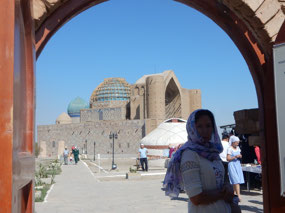
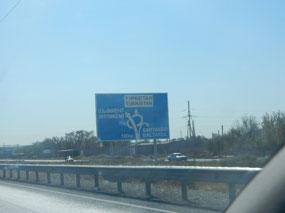
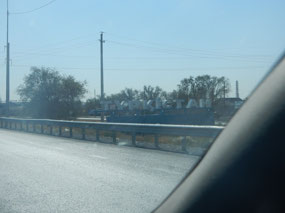
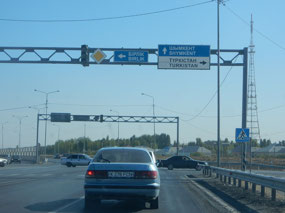

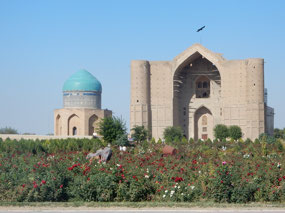
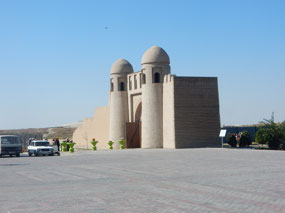
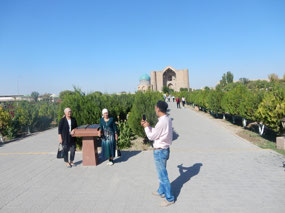
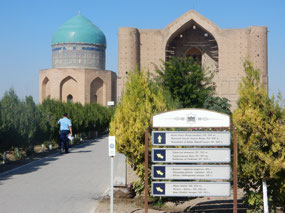
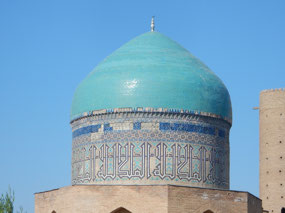
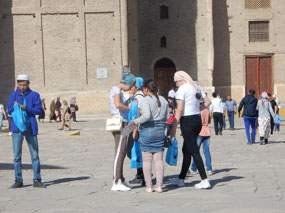

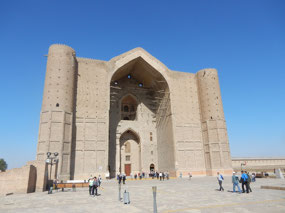
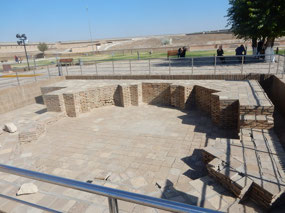
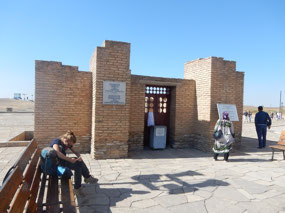
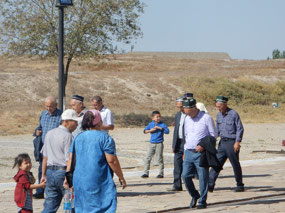

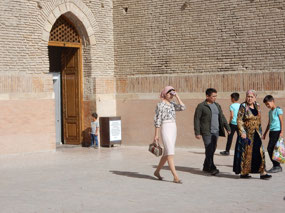
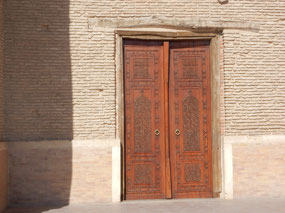
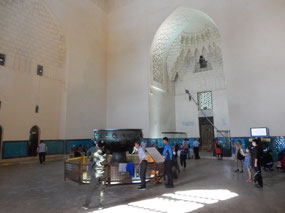
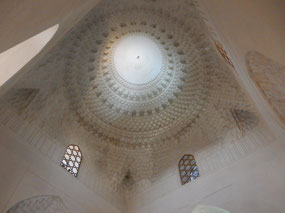
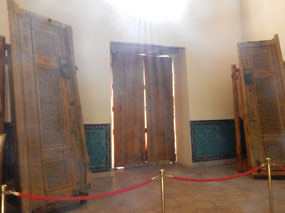
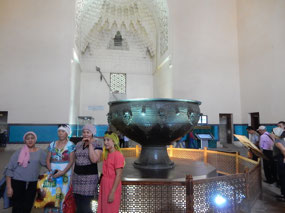
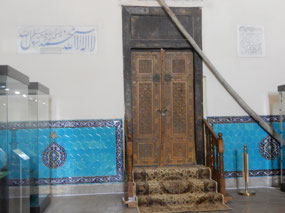
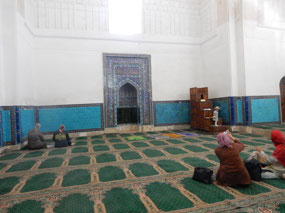
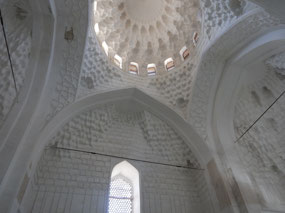
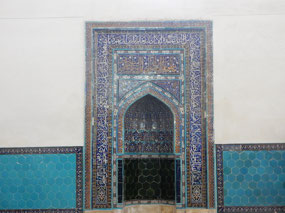
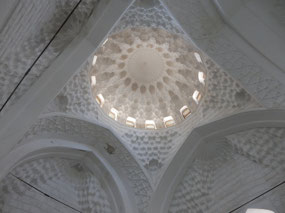
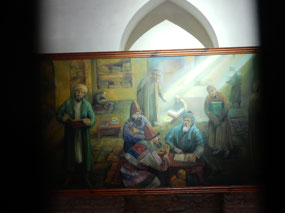

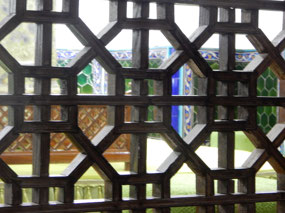
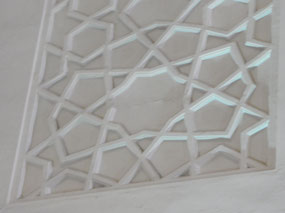
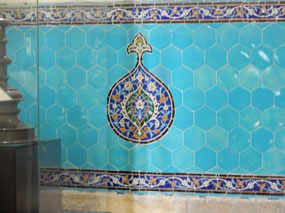
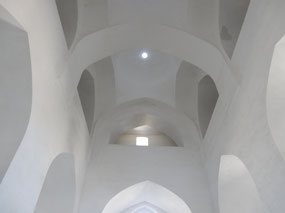
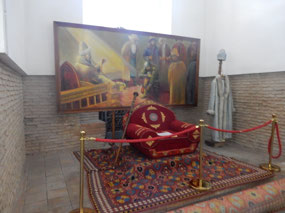
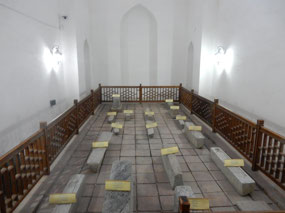
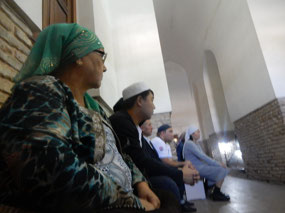
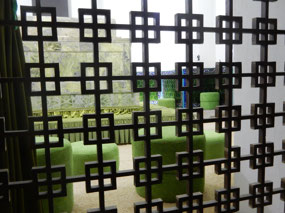

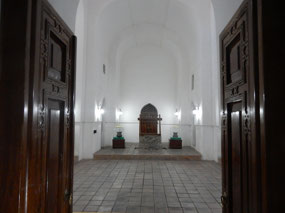
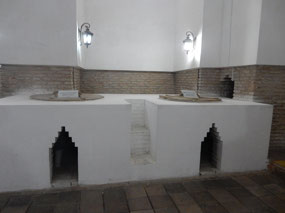
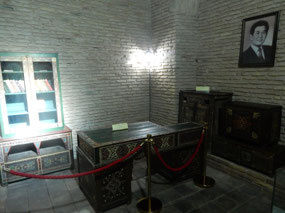
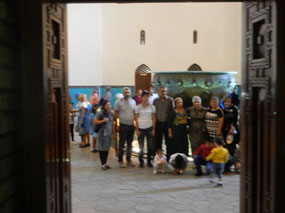
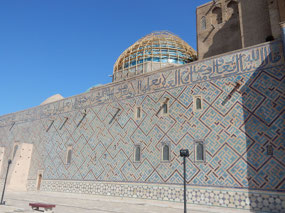
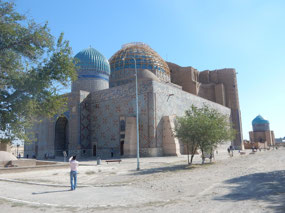
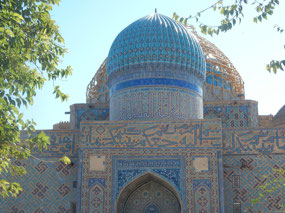

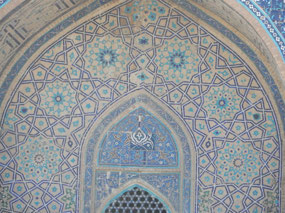
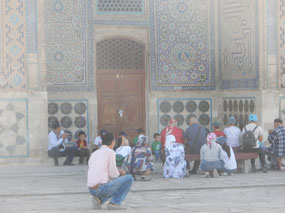

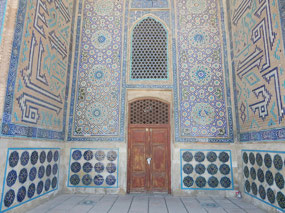
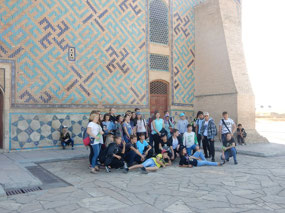
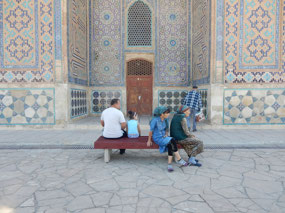
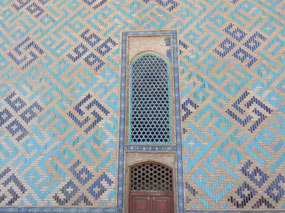
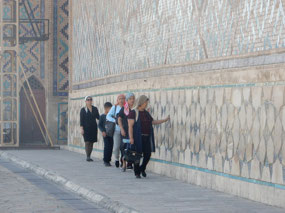
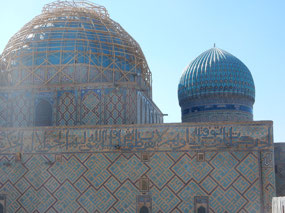
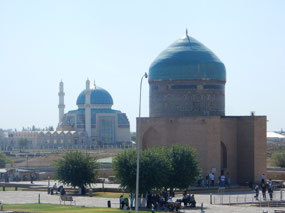
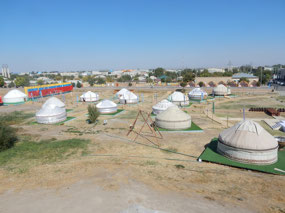
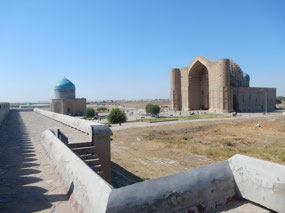
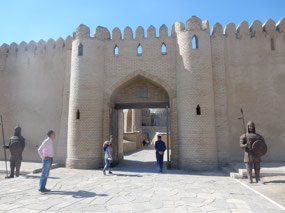
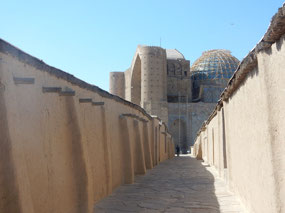
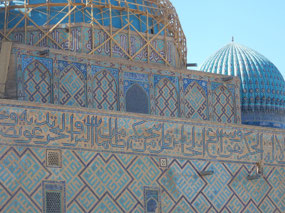

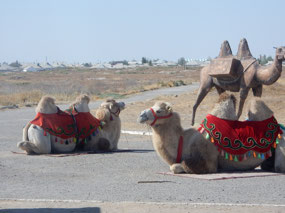
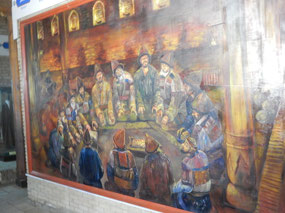
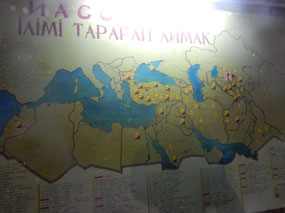
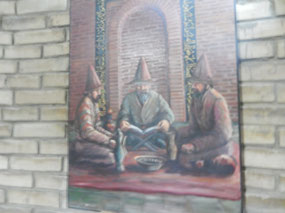
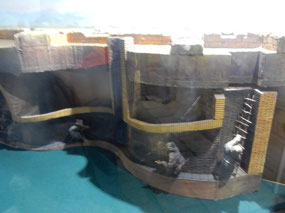

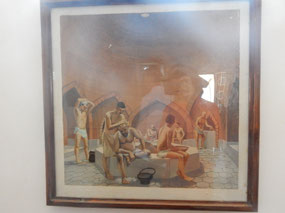
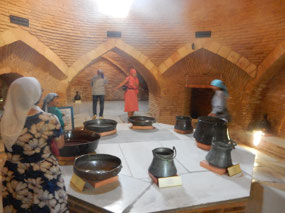
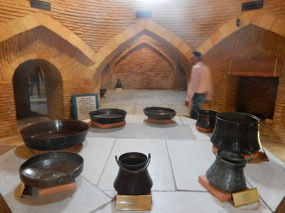
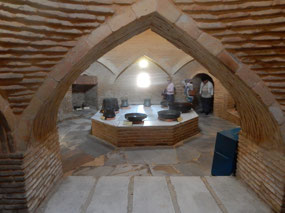
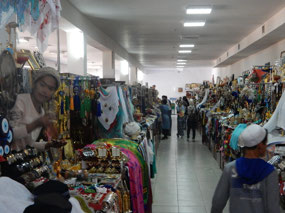
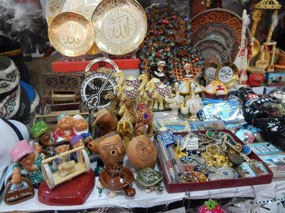
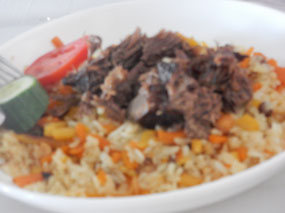
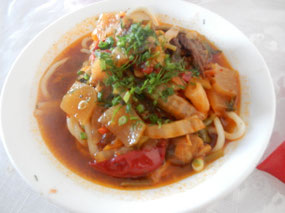




2025-05-22